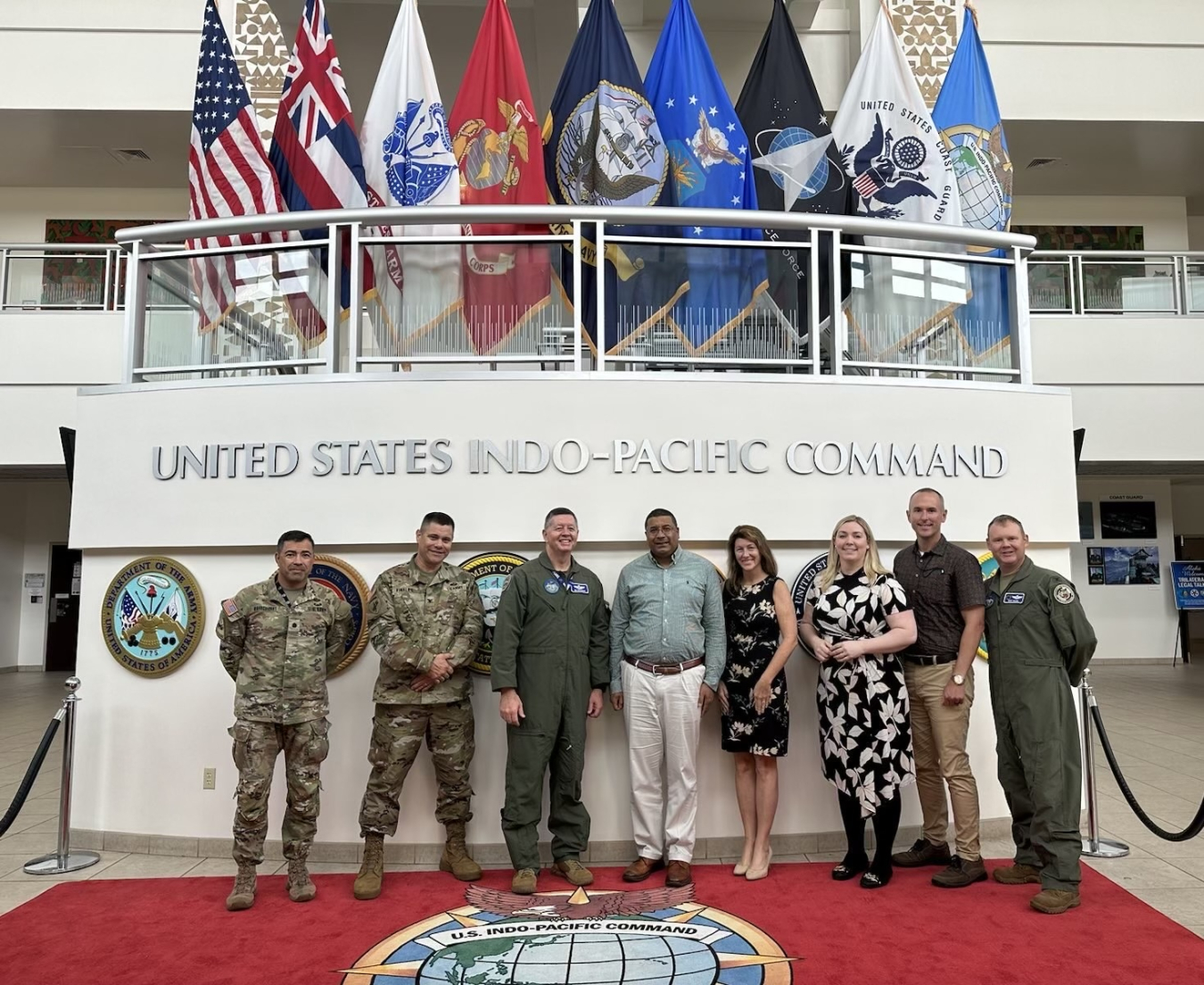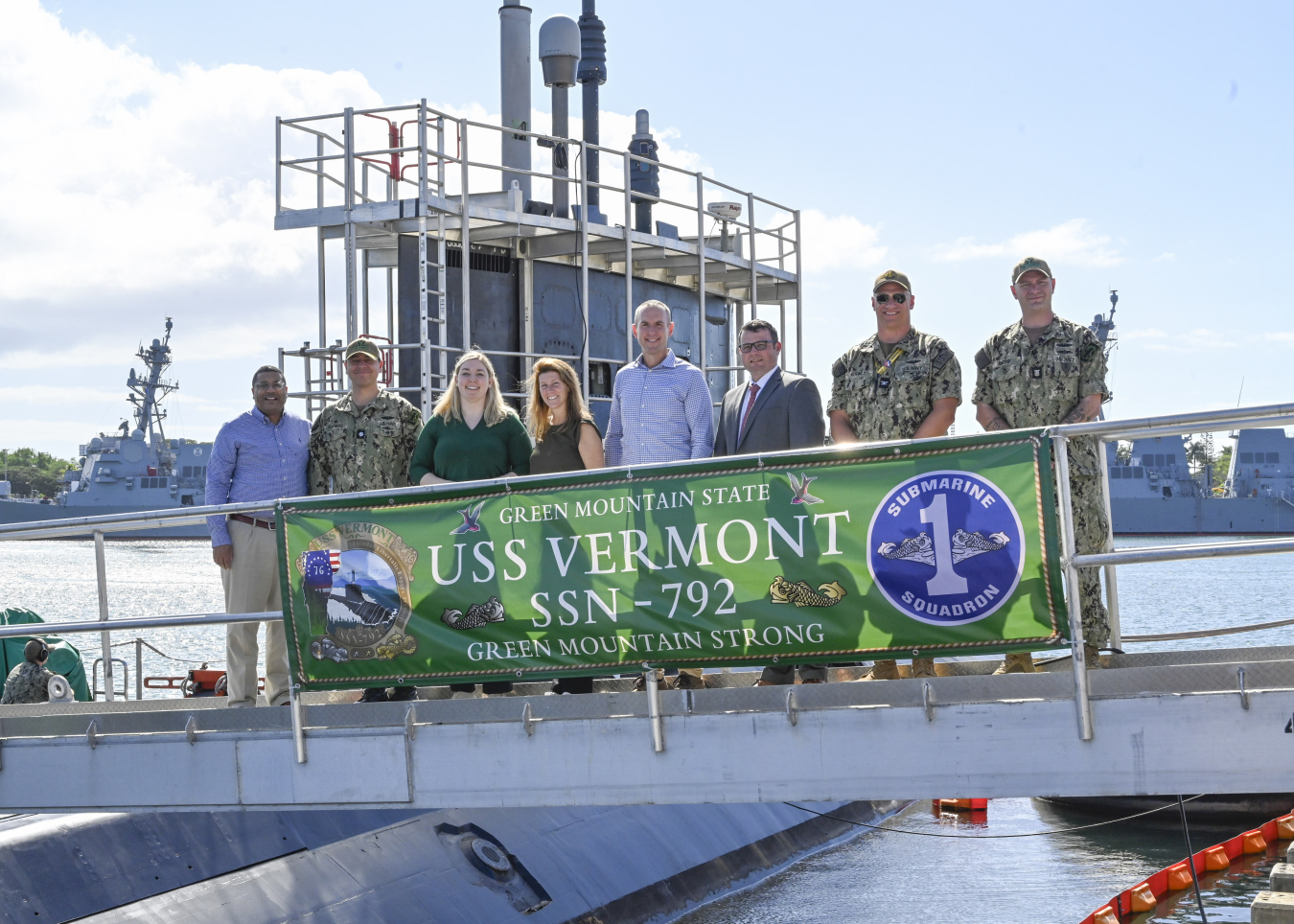Trip highlights the value of NNSA-Defense Department cooperation to keep vital region secure.
National Nuclear Security Administration
December 29, 2023Trip highlights the value of NNSA-Defense Department cooperation to keep vital region secure
NNSA Principal Deputy Administrator Frank Rose visited Hawaii from December 4-8 for a series of meetings with the United States Indo-Pacific Command (USINDOPACOM) that focused on discussions on the regional security environment, integrated deterrence, and joint NNSA-Department of Defense (DOD) initiatives to secure radioactive and nuclear materials and build partner capacity. USINDOPACOM’s Area of Responsibility encompasses about half the earth’s surface, stretching from the waters off the United States’ west coast to the western border of India, from the North Pole to the South Pole.
“Our partners at INDOPACOM hold the vital responsibility of protecting U.S. and allied interests in a dynamic and important area of the world,” Rose said. “Together, we are expanding the toolkit for countering nuclear and radiological threats, and I look forward to continuing our fruitful relationship in the face of a rapidly evolving regional and international environment.”
While in the islands, Rose also visited Sandia National Laboratories’ Kauai Test Facility, the Naval Submarine Training Center, Pacific, the Submarine Command Pacific (SUBPAC), and the Pearl Harbor Naval Shipyard and Intermediate Maintenance Facility; and participated in a policy roundtable hosted by the Pacific Forum and a Pearl Harbor Remembrance event.
Rose began his trip with a series of meetings with USINDOPACOM leaders at Camp Smith, including: the Deputy Director, J5 (Strategic Planning and Policy); Deputy Director, J6 (Command, Control, Communications, and Cyber); Deputy Director, J8 (Requirements and Resources), and the Deputy Commander, Special Operations Command, Pacific. He provided an overview of NNSA’s warhead modernization programs, in addition to its mission, facilities, and workforce. Rose highlighted how NNSA engages with DOD through forums such as the Nuclear Weapons Council, engagement with the Combatant Commands, and the Defense Threat Reduction Agency. He also emphasized NNSA’s efforts to provide partner forces with equipment and training enabling them to counter weapons of mass destruction by interdicting and detecting radiological and nuclear materials before they can be used acts of terrorism.

In his meeting with the J5 staff, discussions focused on the overall security environment in the Indo-Pacific region. Rose highlighted his recent trip to Japan and the Republic of Korea, and noted that NNSA and its partners in Japan have worked to remove over 640 kilograms of highly enriched uranium and plutonium from six Japanese research reactors over the past decade. The J5 staff praised the Department of Energy/NNSA Liaison’s integration with other elements of USINDOPACOM and the strong collaboration between the Command’s country managers and their counterparts in NNSA’s Office of Nuclear Smuggling, Detection, and Deterrence.
While at Camp Smith, Rose briefed an audience of military, federal, civilian, and contractor support staff assigned to USINDOPACOM during an informal session with the Joint Interagency Coordination Group. Rose also toured the Joint Operations Center, which demonstrated both the JOC’s capabilities and the importance of maintaining a shared operating picture with U.S. regional allies and partners.
On December 6th Rose flew to the island of Kaua’i to visit Sandia National Laboratories’ Kauai Test Facility (KTF), a rocket launch range in operation since 1961 that currently supports research on hypersonics, missile defense, and other technology developments. In addition to touring the main compound and launch field, Rose held an “all hands” meeting with the KTF staff and leadership. “It is difficult to overstate our appreciation for the KTF staff’s technical contributions to the Navy and the Pacific Missile Range’s Facility,” Rose said. “Their service and commitment is vital to supporting our national security mission.”
The next day, Rose attended the National Pearl Harbor Remembrance Event marking the eighty-second anniversary of the Japanese attack in 1941. The event featured remarks from USINDOPACOM Commander Admiral John Aquilino and Captain Ray Danial Hower, a third generation Marine Corps pilot and great nephew of Lieutenant Commander (Ret.) Louis Conter, who at 102 is the last surviving crew member of the USS Arizona. PDA Rose later visited the USS Arizona Memorial.
Following the ceremony at Pearl Harbor, Rose visited: the Naval Submarine Training Center, Pacific; Command Submarine Pacific (SUBPAC); and the Pearl Harbor Naval Shipyard and Intermediate Maintenance Facility. In addition to touring the Virginia Class submarine USS Vermont, Rose received a briefing on the SUBPAC force structure and discussed radiological emergency planning activities and coordination with NNSA’s Nuclear Emergency Support Team and the DOE/NNSA Liaison at USINDOPACOM.

On December 8th Rose concluded his trip by participating in a roundtable hosted by the Pacific Forum on NNSA’s role in navigating a complicated nuclear security environment. In addition to providing an overview of NNSA’s mission and the broader Nuclear Security Enterprise (NSE), he highlighted the need for integrated deterrence, investing in stockpile production infrastructure, and increasing flexibility within the NSE.

